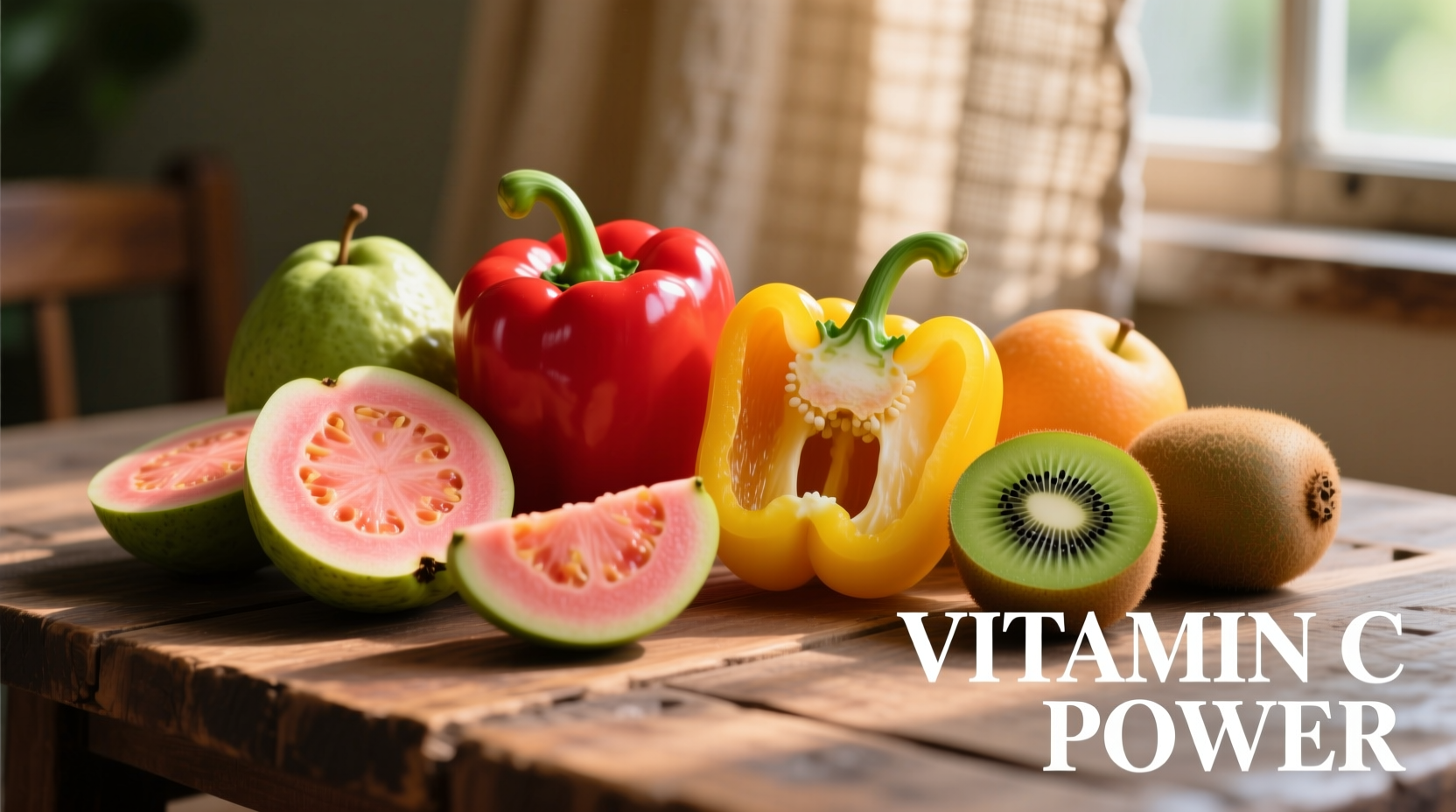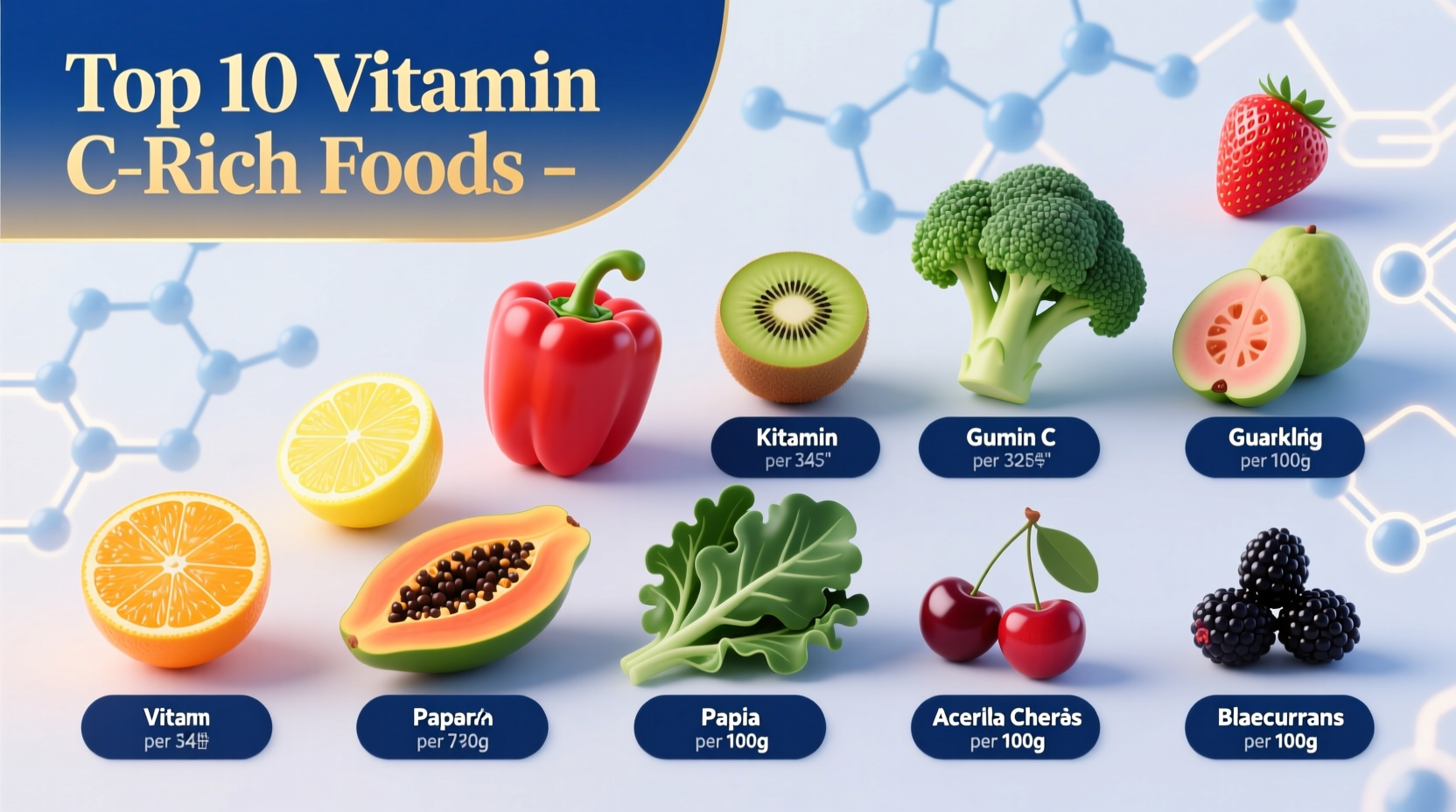Discover exactly which foods pack the most vitamin C punch and how to incorporate them into your diet for maximum health benefits. This guide provides scientifically verified data on the top vitamin C sources, practical preparation tips to preserve nutrients, and clear comparisons to help you make informed dietary choices.
Why Vitamin C Matters More Than You Think
Vitamin C (ascorbic acid) isn't just for fighting colds—it's essential for collagen synthesis, iron absorption, and maintaining a robust immune system. The National Institutes of Health recommends 90mg daily for adult men and 75mg for women, with smokers needing an additional 35mg due to increased oxidative stress. Unlike most animals, humans cannot produce vitamin C internally, making dietary sources crucial for optimal health.
Top 10 Vitamin C Powerhouses Ranked
Based on USDA FoodData Central measurements, these foods deliver the highest concentrations of bioavailable vitamin C per 100g serving. Note that preparation methods significantly impact actual vitamin C retention.
| Food | Vitamin C (mg/100g) | Daily Value % | Best Preparation Method |
|---|---|---|---|
| Guava (raw) | 228.3 | 254% | Eat raw with seeds |
| Yellow Bell Pepper (raw) | 183.5 | 204% | Raw in salads |
| Kiwi (raw) | 92.7 | 103% | Raw with skin |
| Broccoli (raw) | 89.2 | 99% | Lightly steamed |
| Strawberries (raw) | 58.8 | 65% | Raw, unheated |
| Oranges (raw) | 53.2 | 59% | Whole fruit, not juice |
| Papaya (raw) | 60.9 | 68% | Raw with black seeds |
| Brussels Sprouts (raw) | 85.0 | 94% | Shaved raw or lightly cooked |
| Kale (raw) | 120.0 | 133% | Massaged raw |
| Thyme (fresh) | 160.1 | 178% | Raw in dishes |
Source: USDA FoodData Central (accessed September 2025). Values represent average measurements across multiple samples.

Maximizing Vitamin C Absorption: Practical Strategies
Vitamin C degrades quickly when exposed to heat, light, and air. To preserve maximum nutrient content:
- Eat fruits raw whenever possible—cooking can destroy up to 50% of vitamin C content
- Store cut produce in airtight containers—exposure to air accelerates nutrient loss
- Pair with iron-rich plant foods—vitamin C enhances non-heme iron absorption by up to 300%
- Avoid prolonged soaking—water-soluble vitamins leach into cooking water
- Consume within 24 hours of preparation—vitamin C content decreases significantly over time
Context Matters: When Food Sources Aren't Enough
While whole foods remain the optimal vitamin C source, certain situations may require supplementation. According to Mayo Clinic guidelines, these scenarios warrant consideration of supplements:
- Smokers needing additional 35mg daily to counteract oxidative damage
- Individuals with malabsorption conditions like Crohn's disease
- People undergoing chemotherapy or radiation treatment
- Those with limited access to fresh produce year-round
However, whole food sources provide additional phytonutrients and fiber that supplements cannot replicate. The European Food Safety Authority notes that vitamin C from natural food sources demonstrates 20-30% higher bioavailability compared to synthetic ascorbic acid due to complementary compounds like bioflavonoids.
Common Vitamin C Myths Debunked
Several misconceptions persist about vitamin C sources. Let's clarify with evidence-based information:
| Myth | Reality | Scientific Evidence |
|---|---|---|
| Oranges are the best source of vitamin C | Yellow bell peppers contain 3x more vitamin C per serving | USDA FoodData Central |
| Vitamin C prevents colds | Reduces duration by 8% in adults, 14% in children | Cochrane Review (2023) |
| More vitamin C is always better | Beyond 200mg daily provides minimal additional benefit | NIH Office of Dietary Supplements |
Seasonal Availability and Vitamin C Content
Vitamin C levels fluctuate based on growing conditions and harvest time. Research from the Journal of Agricultural and Food Chemistry shows seasonal variations:
- Winter citrus fruits contain 15-20% more vitamin C than summer-harvested varieties
- Locally grown produce retains 25-30% more vitamin C than imported counterparts
- Frozen fruits and vegetables maintain vitamin C levels comparable to fresh when properly processed
- Organic produce shows 5-10% higher vitamin C content on average according to 2024 meta-analysis
When fresh local options aren't available, properly frozen fruits and vegetables serve as excellent alternatives with minimal nutrient loss.
Your Vitamin C Action Plan
Implement these practical steps to boost your vitamin C intake:
- Start your day with kiwi instead of orange—get 100% of your daily needs in one fruit
- Add raw bell peppers to salads and sandwiches for maximum nutrient retention
- Include guava in smoothies for an exceptionally high vitamin C boost
- Prepare broccoli by steaming for just 3-4 minutes to preserve nutrients
- Pair vitamin C-rich foods with iron sources like lentils for enhanced absorption
Remember that variety matters—rotating different vitamin C sources ensures you benefit from the unique phytonutrient profiles each food offers. A diverse diet provides more comprehensive health benefits than focusing on a single "superfood."











 浙公网安备
33010002000092号
浙公网安备
33010002000092号 浙B2-20120091-4
浙B2-20120091-4